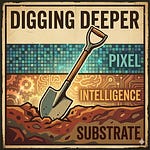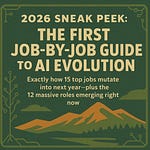We need to talk about Model Context Protocol (MCP), because I see too many teams treating it like it’s a silver bullet. It’s not.
What’s MCP? MCP is how your AI talks to your tools. All of them. Your databases, your documents, your Slack, your code repos—everything. It's the difference between copy-pasting from five different systems for 20 minutes versus asking Claude one question and getting an answer that pulls from all of them automatically. Zapier's using it to hit 89% AI adoption. Block's using it to save 50-75% on development time. The companies that get MCP right are building massive competitive advantages.
The companies that get it wrong are creating disasters.
Back in April, I wrote about MCP as this fundamental shift—from telling AI exactly what to do to just describing tools and letting AI figure it out. I covered the operational realities, the latency questions, the security concerns.
But here's what I've learned since then: knowing how MCP works isn't enough. The real problem—the one that's killing 95% of AI implementations—isn't understanding MCP's capabilities. It's understanding where MCP belongs in your architecture. Since April I’ve seen too many teams get excited about "orchestration by inference," and then immediately put MCP in their checkout flow or trading system where it destroys everything it touches. They understand the what but not the where.
Here's what's actually happening: teams are so excited about connecting AI to everything that they're connecting it wrong. They're putting MCP in customer-facing systems where its 300-800ms latency destroys user experience. They're granting permissions that expose entire databases (per Docker ~43% of MCP servers have command injection vulnerabilities). Teams are treating MCP like a faster API instead of understanding it's an intelligence layer that should never touch your transaction path.
The difference between success and failure isn't the tools—everyone's using the same MCP servers. It's architecture. It's knowing that MCP belongs in background analysis, not checkout flows. In development assistance, not production databases. In decision support, not real-time systems.
This guide gives you a roadmap to implement MCP correctly and avoid those costly architectural mistakes that can end in broken trust and bad board meetings:
The seven architectural failures that are killing AI implementations—from the Universal Router trap that adds latency to everything, to the Kitchen Sink server pattern that creates security nightmares, to the Real-Time Context delusion that destroys conversion rates. Each one documented with real measured latencies and actual company failures.
Where MCP actually works—the Intelligence Layer pattern Block uses to analyze millions of transactions without touching production systems. The Sidecar pattern Zapier uses to enhance workflows without blocking users. The Batch pattern that processes overnight intelligence for morning consumption. These aren't theories—they're production patterns from the 5% who succeed.
The security reality nobody discusses—including the Asana breach that exposed 1,000 customers' data across organizations for 34 days, the GitHub MCP vulnerability that's still not fixed, and exactly which of the 5,960+ MCP servers you can actually trust (spoiler: about ten).
A practical implementation roadmap—not the vendor fantasy of "deploy in days" but the actual six-month path from prototype to production that successful companies follow, complete with go/no-go checkpoints and rollback procedures.
The actual performance numbers—300-800ms baseline latency that can't be cached away, why JSON-RPC was chosen over faster protocols, and why putting MCP in your hot path is architectural malpractice.
Because here's the thing nobody's saying clearly: AI lives or dies on workflows. Workflows live or die on integrations. And right now, most teams are integrating MCP in ways that make their systems worse, not better. Get this right and you're in the 5% seeing real ROI. Get it wrong and you're joining the $40 billion waste. The difference isn't better tools—it's knowing where MCP belongs.
Listen to this episode with a 7-day free trial
Subscribe to Nate’s Substack to listen to this post and get 7 days of free access to the full post archives.













